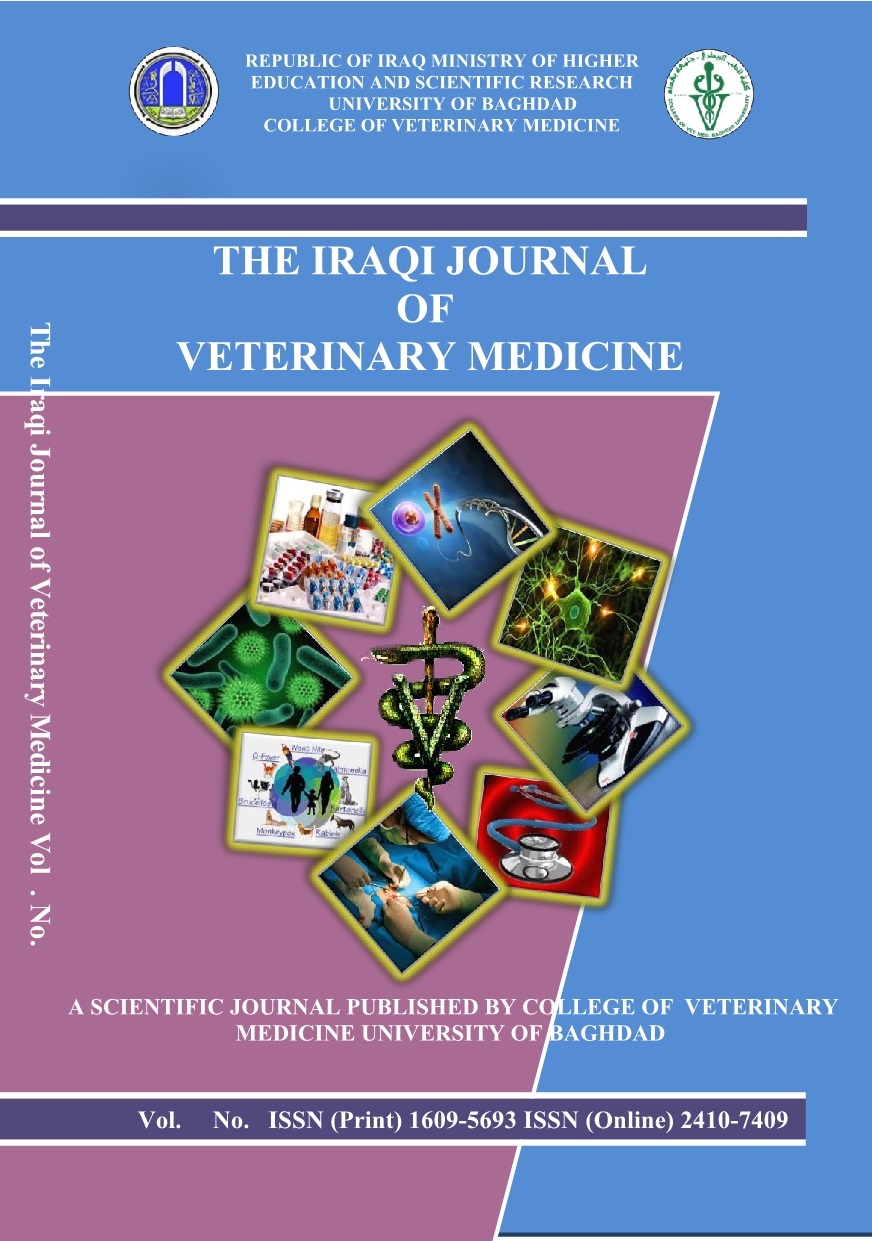Abstract
The objective of this study was designed to evaluate the possibility of repairing tracheal cartilage defect in dogs. 18 local breed dogs of both sexes was used in this study, they are allocated into 2 equal groups. A tracheal defect was induced in the cervical part of the trachea as a window about 3cm x 2cm in diameter. The defect was closed in 1st group by using polypropylene mesh and bone cement substance, while in 2nd group polypropylene mesh with fresh auto- bone marrow. Post-operative study including, clinical observation, gross pathology and histopathological evaluation was performed in all animals. The most important postoperative clinical observation was represented by subcutaneous emphysema at the site of operation in the 2nd group animals, which gradually disappeared within few days. Otherwise no other important complications was reported in both groups during the period of the experiment. The gross pathological changes and biopsy collection for all animals was done at 15, 30, 60 postoperative days. The gross examination revealed complete closing of the induced tracheal defect in all operated animals and a mild adhesion with the surrounding tissues. In both groups, the histopathological features was represented by newly granulation tissue formation and areas of hyaline cartilage degeneration and necrosis. The cartilage regeneration was showed only in 2nd group through by formation of new cartilage cells. In conclusion, it can use both techniques for reconstruction of tracheal defect in dogs but the auto bone marrow group was regarded the best due to improvement of the healing process.
Keywords
Bone cement
Bone marrow
Polypropylene mesh
Tracheal defect healing
Abstract
إن الهدف من تصميم البحث هو لتقييم إمكانية إصلاح عيوب غضروف القصبة الهوائية في الكلاب .استخدمت في هذه الدراسة 18 من الكلاب المحلية ومن كلا الجنسين . قسمت إلى مجموعتين متساويتين. تم استحداث أذى في الجزء العنقي من القصبة الهوائية على شكل نافذة وبقطر حوالي 3سم * 2سم . تم غلق الأذى في المجموعة الأولى باستخدام مادة اسمنت العظم الصناعية مع شبكة البولي بروبايلين والمجموعة الثانية باستخدام شبكة البولي بروبايلين مع نخاع العظم الذاتي. تضمن تقييم الدراسة ما بعد العملية على ملاحظة العلامات السريرية , التغيرات العيانية والنسجية المرضية لكل الحيوانات . أظهرت النتائج السريرية بعد إجراء العملية حدوث نفاخ هوائي تحت الجلد في منطقة إجراء العملية الجراحية في المجموعة الثانية والتي اختفىت تدريجيا بعد أيام قليلة إضافة إلى عدم حدوث أي مضاعفات مهمة في كلا المجموعتين خلال فترة الدراسة .تم ملاحظة التغيرات العيانية واخذ الخزع النسجية لكل الحيوانات خلال 15و30و60 يوم بعد إجراء العملية على التوالي حيث أظهرت النتائج العيانية إلى غلق الأذى المستحدث في كل الحيوانات مع وجود التصاقات قليلة مع الأنسجة المجاورة أما النتائج النسيجية فقد أظهرت تكوين نسيج حبيبي جديد مع مناطق تنكس وتنخر للغضروف الزجاجي. تجدد الغضروف لوحظ فقط في المجموعة الثانية من خلال تكوين للخلايا الغضروفية الجديدة نستنتج منه يمكن استخدام كلا التقنيتين لغلق عيوب القصبة الهوائية في الكلاب ولكن الطريقة الثانية تعتبر الأفضل بسبب تحسين عملية الالتئام.
Keywords
اسمنت العظم
التئام أذى القصبة الهوائية
شبكة البولي بروبايلين .
نخاع العظم
